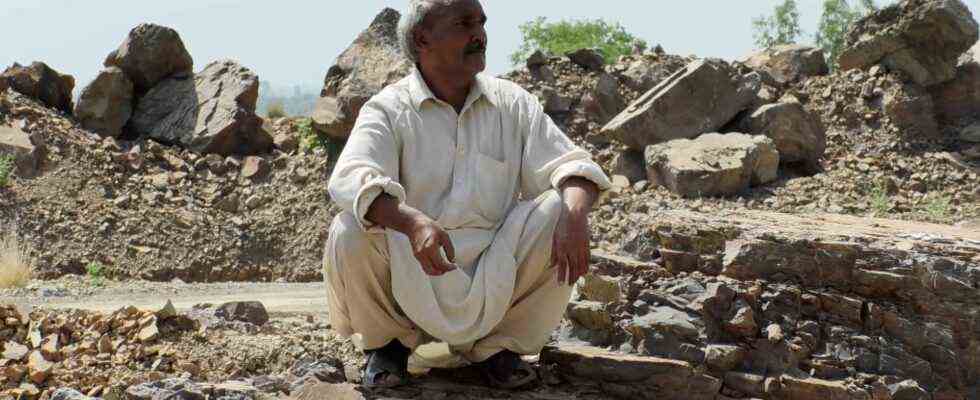Status: 07/30/2021 2:54 a.m.
Hundreds of thousands of people are abducted every year and used as illegal slave labor. In Pakistan, the government is now cracking down on it. It’s a long struggle – especially in remote areas.
Mohammad Arif is sitting in his nine-square-meter hut in Haripur in northern Pakistan. The only luxuries he has is a small tube TV and an old VCR. He pushes the same film in there every day. It makes him think differently. He is still haunted by the trauma of being kidnapped by three men as a young adult. They took him to an undisclosed location where he had to do slave labor for many years.
After being tortured in the unknown location for weeks, he worked in a quarry for up to 16 hours a day. Breaks were not allowed. Anyone who took them was beaten. He remembers the nights even worse than the days. “At night they locked us up and chained us. They threw us food that we don’t even give dogs,” says Arif. “It was barbaric. That’s how I lived my life there, without any contact with the outside world.”
Mohammad Arif had to work in a quarry for up to 16 hours a day.
Image: ARD
Human trafficking as a global problem
Like Mohammad Arif, it is between 600,000 and 800,000 people worldwide every year, according to UN figures. Around 70 percent of them are female and around half are still children. Many of them are abused as sex workers. It is estimated that between 20 and 40 million people are still in modern slave labor today.
For decades, the Pakistani government has done little to counter this practice. In the past few years, however, the penalties have become ever harsher and the crimes pursued more strictly. Such incidents still happen regularly, reports Shahid Akram Abbasi, coordinator at the international human rights organization: “In Pakistan, this mainly happens in remote areas where there is hardly any infrastructure and where education is a major problem.” The perpetrators then kidnapped people and received a reward for doing so. “Most of the time, the victims are needed to work.”
Only a few manage to escape
Just like in the case of Mohammad Arif, who wasn’t the only slave laborer in the quarry. “The shelters were full of people like me. They targeted young men who could do heavy physical labor,” he recalls. After many years in the worst of conditions, Arif wanted to die rather than live. While being taken to work by boat one morning, he decided to jump overboard and make an escape.
“They shot me, but luckily their shots missed the target. I swam for hours until I dared to go ashore,” he says. “There I was helped and I was able to return to my homeland.” A return that very few manage to achieve. Less than one percent of the displaced people manage to escape. For most of them, however, a life in captivity begins with the abduction, from which they can no longer escape.
“There will always be victims”
There is little hope that this practice will soon be over. The human trafficking business is too profitable. According to “Human Rights First”, this means that up to 130 billion euros are converted annually. “That is why it will never be possible to curb human trafficking entirely,” says Shahid Akram Abbasi. “There will always be victims. And they come mainly from areas where people already have a hard time anyway.”
For several years after returning to his home village, Mohammad Arif is still struggling to find his way back to life. His wife, who thought he was dead ten years after his kidnapping, now has another husband. Arif keeps afloat as a day laborer. “I feel neither alive nor dead,” he says. “” The kidnappers took my life from me.

